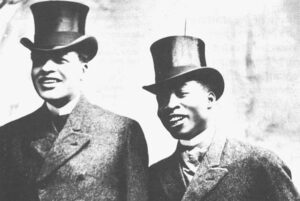Mel Watkins
- 1979

Fellowship Title:
- Black Humor from Stepin Fetchit to Richard Pryor
Fellowship Year:
- 1979

Black Humor from Slavery to Stepin Fetchit
The Public Humor Perhaps the most apt way to describe the public humor of black Americans prior to the mid-1930’s is to say that it was nearly always masked. Not only in the literal sense of grotesque, corked on blackface facades used in the minstrel shows that took the United States by storm in the early 1800’s, but also figuratively and psychologically. As an old blues tune put it: Got one mind for white folks to see, ‘nother for what I know is me; he don’t know, he don’t know my mind. The humor displayed by blacks to those outside of their own ranks was of necessity oblique, sometimes double-edged, and usually at least superficially, self-deprecatory. Slavery, of course, was the primary factor in molding these characteristics. Although bondage and oppression are hardly favorable circumstances for the development of a comic tradition, it was precisely from that situation that both the indigenous and public style of black humor arose. Its form, from the beginning, combined cultural elements common to the numerous traditional African societies
